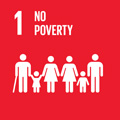- Docente: Stefano Toso
- Credits: 6
- SSD: SECS-P/03
- Language: English
- Teaching Mode: Traditional lectures
- Campus: Bologna
- Corso: Second cycle degree programme (LM) in Economics and Public Policy (cod. 5945)
-
from Nov 12, 2024 to Dec 13, 2024
Learning outcomes
At the end of the course the student is able to use the theoretical and methodological tools for the study of the redistributive effects of public policies. Student has also knowledge of the public debate regarding tax-benefit policies and how they affect inequality and poverty among individuals and households.
Course contents
The course assumes prior knowledge of basic elements of public economics, normally acquired in a three-year economics course of study.
Part I - Inequality and poverty measurement
The axiomatic approach. Statistical measures and welfare-theoretic indices. Inequality and social welfare. Equivalence scales: basic definitions and methods of computing. Absolute and relative poverty. Poverty lines and methods of determination. Standard measures and the axiomatic approach. Monetary transfers, poverty reduction and indicators of target efficiency.
Part II - Income tax Progressivity measurement
Redistribution and progressivity of the personal income tax and social transfers. Local and global measures of progressivity. Monetary transfers, poverty reduction and indicators of target efficiency.
Part III - The expenditure for the welfare state
Theoretical justifications for welfare state expenditure. Ways of provision of social expenditure (in cash, in kind and voucher), Pensions. Social assistance.
Readings/Bibliography
Basic graduate/advanced undergraduate textbooks include:
Cullis, J., Jones, P., Public Finance and Public Choice: Analytical Perspectives, 3rd edition, OUP, 2009
Barr, N., The Economics of the Welfare State, 6th edition, OUP, 2020
Ravaillon, M., The economics of Poverty. History, Measurement and Policy, OUP, 2016
Hindriks, J., and Myles G.D.,Intermediate Public Economics, MIT Press, 2006.
Background reading:
Garland, D., The Welfare State: A Very Short Introduction, OUP, 2016.
Jefferson, P.N., Poverty: A very short Introduction, OUP, 2018.
Smith, S., Taxation: A very short Introduction, OUP, 2015.
Renwick, C., Bread for all: the origins of the Welfare State, Allen Lane/Penguin, 2017.
Additional teaching material (research articles, technical reports, etc.) will be available on VIRTUALE during the course.
Teaching methods
Lectures, home assignments, and tutorials. Students may be asked to present material to lead discussion on some topics.
Assessment methods
Problem sets, final written exam, and/or development of individual or group projects. The grading scale is the following:
<18: Fail
18-23: Sufficient
24-27: Good
28-29: Very good
30: Excellent
30 cum laude: Outstanding (the instructor was impressed)Teaching tools
A video-projector will be used in most of the lectures, for presentations with Power Point files.
Office hours
See the website of Stefano Toso
SDGs


This teaching activity contributes to the achievement of the Sustainable Development Goals of the UN 2030 Agenda.
